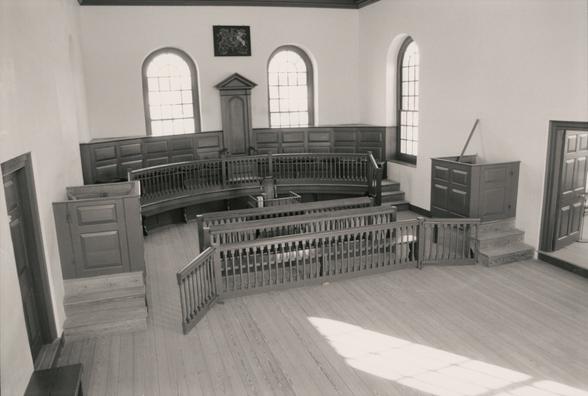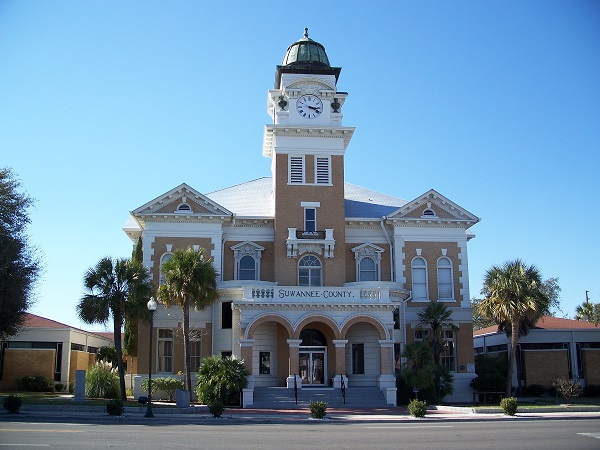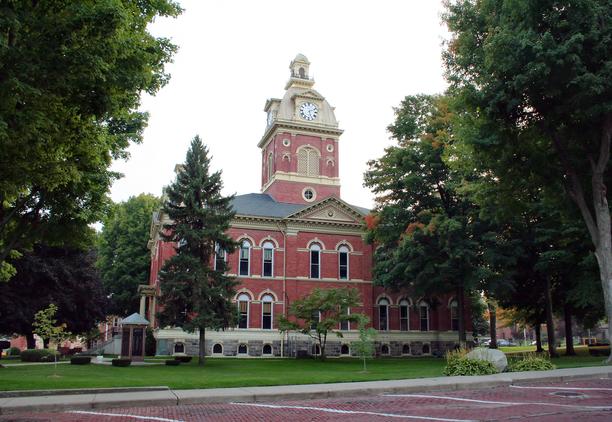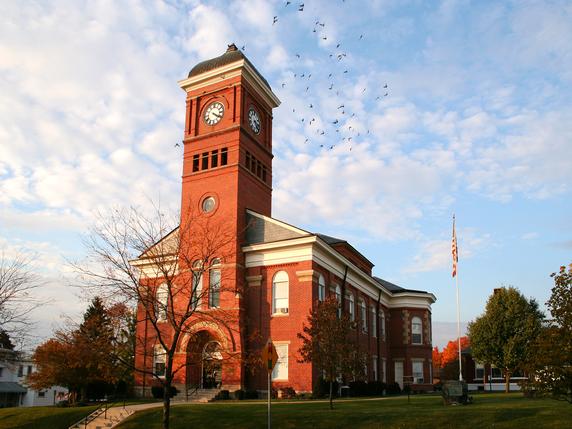 |
|
Reconstructed Colonial courtroom. Photo courtesy Coloial Williamsburg Foundation. |
Many court facility projects involve some amount of renovation or upgrading of existing facilities. The decision of whether to renovate the current court house or to build a new facility is often the first critical point in the facility-planning process. This decision depends upon a number of factors:
- Historical or architectural significance of the building
- Functionality of the current courthouse
- Ability to upgrade the existing structure to comply with modern code requirements
- Potential for expansion
- Needs of persons with disabilities
- Cost
- Security
- Operational efficiency
- Potential for other uses for the facility
Renovation projects can take on different forms, depending upon the degree to which the historical or architectural significance of the building is considered when changes are made.
Returns each portion of the building to the same date or era, often to the original condition. This may involve removing construction that is not of the restoration period. Most restrictive in its treatment of the building.
Rehabilitation
Attempts to bring the building up to modern functional standards through minor alterations without changing the original fabric of the building.
Conservation
Restoration of the exterior of the building to a stable condition and adding contemporary environmental systems while being sensitive to their integration with the original concept of the building.
Preservation
Stabilizes the building as found and prevents further deterioration.
Reconstruction
Creates replicas of buildings or parts of buildings that may have been lost with time. Reconstruction may be based on historical records, written descriptions, drawings, or photographs, or it may be conjectural, based on a style of the period.
Remodeling
Makes functional changes to the building while ignoring important historical or architectural features, removing or replacing these features without evaluating their significance or contribution to the building.
The historical value of the facility is critical in determining whether to restore, renovate, or replace the existing structure. Because the courthouse is often the site of important historical events in the community, a prominent architectural element, or a building on the National Register of Historic Places, there is often a need to consider some amount of historical preservation in any courthouse project. The process starts with the use of qualified historical consultants and archaeologists and may include technical analysis of the finishes and fabric of the building.
An active courthouse is a living building that cannot be frozen in time. Many projects result in a combination of historic treatments and new construction. This combination of approaches should be done honestly so that the true historical fabric can be distinguished from new construction while using designs and materials that are compatible and sympathetic.
 |
|
Live Oak, Florida, Suwanee County Courthouse |
 |
|
LaGrange, Indiana County Courthouse |
 |
|
Mt. Gilead, Ohio, Morrow County Courthouse |
When working with existing structures, there are often unknown conditions that cannot be evaluated until the work is under way. There should be a plan to deal with these contingencies. For example, it is often not known what will be found underneath dropped ceilings, plaster board or wood paneling, and other modern improvements.
Most projects involve changing the existing fabric of the building. When working with historic buildings it is important that all changes be documented. Documentation preserves the historical record of the building and its changes over the years. Architectural decisions made in the current project may not be appropriate later. Documentation allows the process to be reversed.
Another facet of renovation is the complicated set of organizations and interests that want to be involved in the project. In addition to the normal governmental, professional, and civic organizations, local and state historic preservation groups, and even local garden clubs, may want to be involved. Severe restrictions may be placed on changes to the building and its uses that will com promise the operation of the court or even make the facility non-functional.
Most court facilities built before the 1940s were not designed to house modern courts with their special circulation patterns and security needs. Often it becomes a matter of which compromises to accept and which values to emphasize. Older courthouses frequently were built on a central site in the community, such as a town square. Over the years a number of commercial interests, such as restaurants and law offices, developed and grew to depend upon the courthouse. It is not uncommon that as county government functions expand, more and more services move from the town center to the fringe of the community. In many cases removing the courthouse from the town center to a suburban location can further weaken the central focus of the community and erode support for local business.
See A Courthouse Conservation Handbook published by the Preservation Press, National Trust for Historic Preservation, in cooperation with the National Clearinghouse for Criminal Justice Planning and Architecture, 1976.